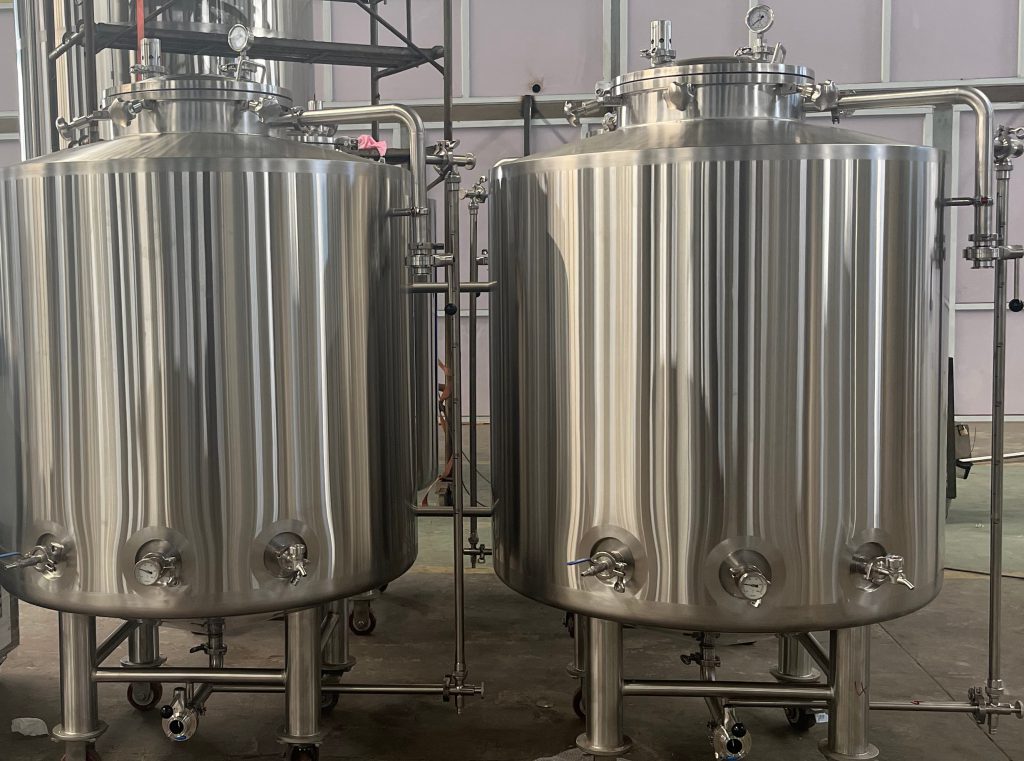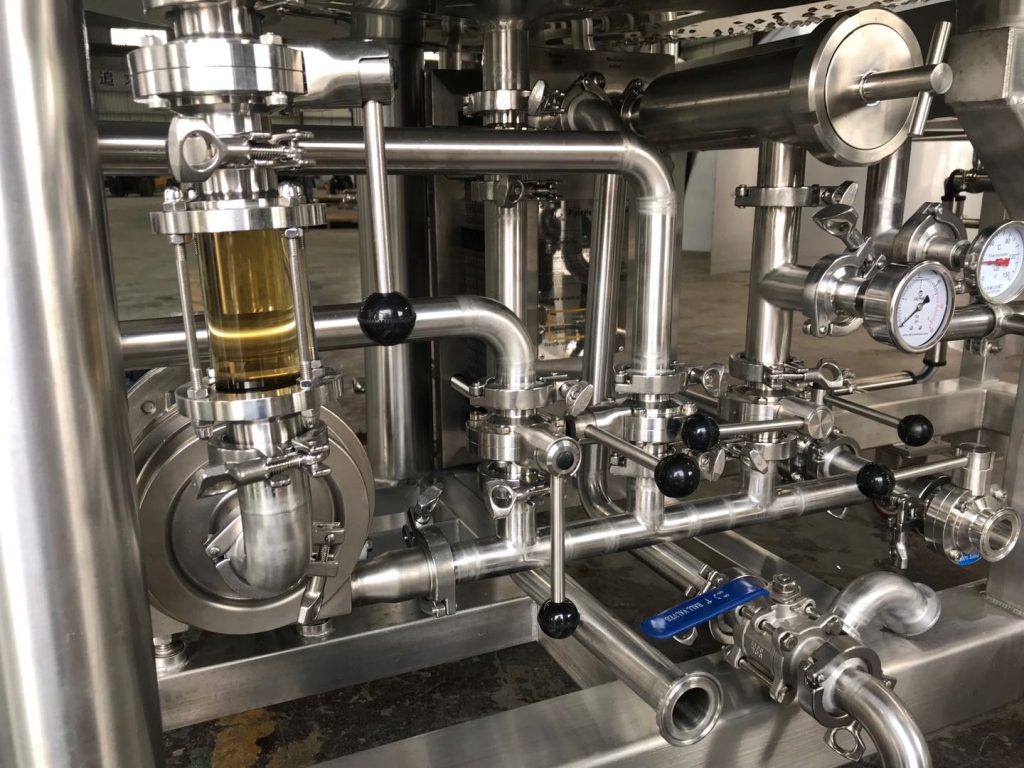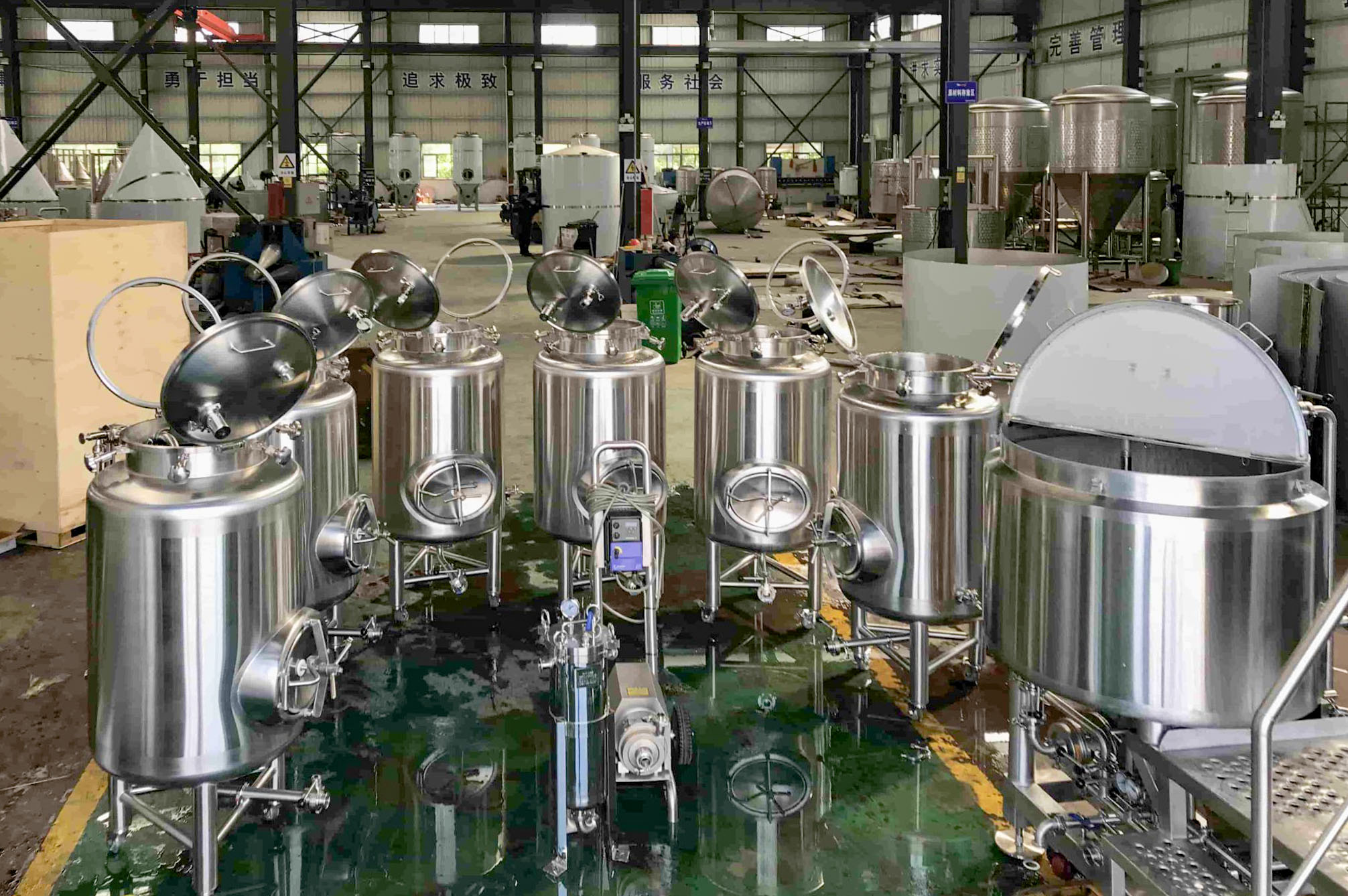Introduction

Kombucha, a fermented tea beverage, has gained immense popularity due to its purported health benefits and unique flavor profile. Its tangy, slightly sweet taste combined with potential probiotic benefits has resonated with health-conscious consumers. As the demand for kombucha continues to rise, many businesses are looking to scale up their production from home-based operations to industrial-level brewing to meet market demands. This comprehensive guide delves into the essential industrial kombucha brewing equipment required for large-scale production, ensuring efficiency, consistency, and quality in every batch, from initial tea preparation to final packaging. Understanding the equipment needs is crucial for a successful commercial kombucha venture.
Understanding the Kombucha Brewing Process
Before diving into the equipment, it’s crucial to understand the kombucha brewing process. This process involves a delicate balance of ingredients and environmental factors. The basic steps include:
- Tea Preparation: Brewing a sweet tea base, typically using black or green tea. The quality of the tea significantly impacts the final kombucha flavor.
- Cooling: Cooling the tea to a suitable temperature for fermentation, typically around 70-85°F (21-29°C). This temperature range is optimal for the SCOBY’s activity.
- Inoculation: Adding a SCOBY (Symbiotic Culture of Bacteria and Yeast) and starter liquid from a previous batch to the cooled tea. The starter liquid helps to create a favorable environment for the fermentation to begin.
- Fermentation: Allowing the mixture to ferment for a specific period, typically 7-30 days, at a controlled temperature. This fermentation period allows the SCOBY to convert the sugars into organic acids and other compounds, creating the characteristic kombucha tang.
- Second Fermentation (Optional): Adding fruits, juices, or other flavorings for a secondary fermentation to enhance flavor and carbonation. This stage allows for creative flavor experimentation and customization.
- Bottling and Packaging: Filling and sealing bottles or other containers for distribution. Proper sealing is essential to maintain carbonation and prevent contamination.
Essential Industrial Kombucha Brewing Equipment
Scaling up kombucha production requires specialized equipment to handle larger volumes and maintain consistent quality. Investing in the right equipment is essential for maximizing efficiency and profitability. Here’s a breakdown of the essential industrial kombucha brewing equipment:
Brewing Vessels
- Tea Brewing Tanks: Large stainless steel tanks equipped with heating and mixing capabilities for efficient tea preparation. These tanks allow for precise temperature control and even distribution of heat for consistent brewing.
- Fermentation Tanks: These tanks, typically made of stainless steel or food-grade plastic, provide a controlled environment for the fermentation process. They often include features like temperature control, CIP (Cleaning-in-Place) systems, and sampling ports, allowing for easy monitoring and maintenance.
Temperature Control
- Glycol Chiller: A glycol chiller system is essential for maintaining precise temperature control during fermentation. It circulates a glycol solution through jackets on the fermentation tanks, allowing for efficient cooling or heating. This precise temperature regulation ensures optimal SCOBY activity and consistent fermentation results.
Filtration
- Filtration System: Depending on the desired clarity and flavor profile of the kombucha, a filtration system may be necessary to remove yeast, sediment, or other particles. Filtration can create a smoother, clearer kombucha, but it may also remove some beneficial bacteria and yeast.
Carbonation
- Carbonation System: For sparkling kombucha, a carbonation system is used to inject CO2 into the beverage. This can be achieved through forced carbonation or by allowing a secondary fermentation in sealed bottles. Forced carbonation allows for precise control of carbonation levels, while secondary fermentation creates a more natural, subtle carbonation.
Bottling and Packaging
- Filling Machine: An automated filling machine is crucial for efficient and consistent bottling of kombucha. These machines can handle various bottle sizes and types, significantly increasing production speed.
- Labeling Machine: A labeling machine automates the process of applying labels to bottles, ensuring a professional and consistent appearance. This is essential for branding and marketing the kombucha effectively.
Cleaning and Sanitation
- CIP System: A CIP system is essential for maintaining hygiene and preventing contamination in the brewing equipment. It automates the cleaning and sanitizing process, ensuring consistent and thorough cleaning of tanks and pipelines, minimizing the risk of spoilage.
Other Essential Equipment
- Pumps and Hoses: Food-grade pumps and hoses are necessary for transferring liquids between tanks and other equipment. These must be made of materials that are compatible with kombucha’s acidity.
- Scales and Measuring Devices: Accurate scales and measuring devices are crucial for precise ingredient measurements and quality control. Consistency in ingredient ratios is essential for producing a consistent final product.
- Storage Tanks: Storage tanks may be needed for holding tea, kombucha, or other liquids before or after processing. These tanks should be designed to maintain the quality and integrity of the stored liquids.
Choosing the Right Industrial Kombucha Brewing Equipment
Selecting the appropriate industrial kombucha brewing equipment depends on several factors, including:
- Production Volume: The scale of production will determine the size and capacity of the equipment required. A larger production volume necessitates larger tanks and more efficient filling and packaging equipment.
- Budget: The budget available for equipment purchase will influence the choices made. There are various options available at different price points, but it’s important to balance cost with quality and functionality.
- Automation Level: The desired level of automation will impact the type of equipment selected. Higher levels of automation can increase efficiency but also require a higher initial investment.
- Quality Standards: The desired quality and consistency of the kombucha will influence the choice of equipment. Higher quality standards may necessitate more specialized equipment, such as filtration systems or precise temperature control systems.
Setting Up Your Industrial Kombucha Brewery
Setting up an industrial kombucha brewery involves careful planning and consideration of various factors, including:
- Facility Layout: The layout of the facility should optimize workflow and ensure efficient movement of materials and personnel. A well-designed layout can minimize bottlenecks and maximize productivity.
- Utilities: Adequate utilities, such as water, electricity, and drainage, are essential for the operation of the equipment. Proper planning for utility connections is crucial for a smooth setup process.
- Licensing and Regulations: Compliance with local and federal regulations regarding food production and beverage manufacturing is crucial. This includes obtaining necessary permits and licenses and adhering to food safety guidelines.
Industrial Kombucha Brewing Equipment Maintenance

Proper maintenance of industrial kombucha brewing equipment is essential for ensuring its longevity and preventing costly downtime. Regular maintenance tasks include:
- Cleaning and Sanitizing: Regular cleaning and sanitizing of all equipment are crucial for preventing contamination and ensuring product quality. A strict cleaning and sanitation protocol is essential for maintaining food safety standards.
- Inspections: Regular inspections of equipment for wear and tear, leaks, or other issues can help identify potential problems early on. Preventative maintenance can help avoid costly repairs down the line.
- Repairs: Prompt repairs of any damaged or malfunctioning equipment are essential for preventing further damage and ensuring smooth operation. Addressing issues quickly can minimize downtime and maintain production schedules.
Conclusion
Investing in the right industrial kombucha brewing equipment is a critical step for businesses looking to scale up their kombucha production. By carefully considering the factors discussed in this guide and choosing equipment that meets their specific needs, businesses can ensure efficient, consistent, and high-quality kombucha production, meeting the growing demand for this popular beverage.
FAQ
Q: How much space is required for an industrial kombucha brewery?
A: The space required for an industrial kombucha brewery depends on the scale of production and the size of the equipment. A typical industrial kombucha brewery may require several thousand square feet of space to accommodate the brewing equipment, storage areas, and packaging facilities.
Q: What are the key considerations for choosing fermentation tanks for kombucha?
A: Key considerations for choosing fermentation tanks for kombucha include the material of construction (stainless steel is preferred), size and capacity, temperature control capabilities, CIP system integration, and ease of cleaning and sanitation.
Q: How important is temperature control in kombucha brewing?
A: Temperature control is crucial in kombucha brewing as it directly affects the fermentation process and the final product’s flavor profile. Maintaining a consistent temperature within the optimal range for kombucha fermentation is essential for producing high-quality kombucha.

